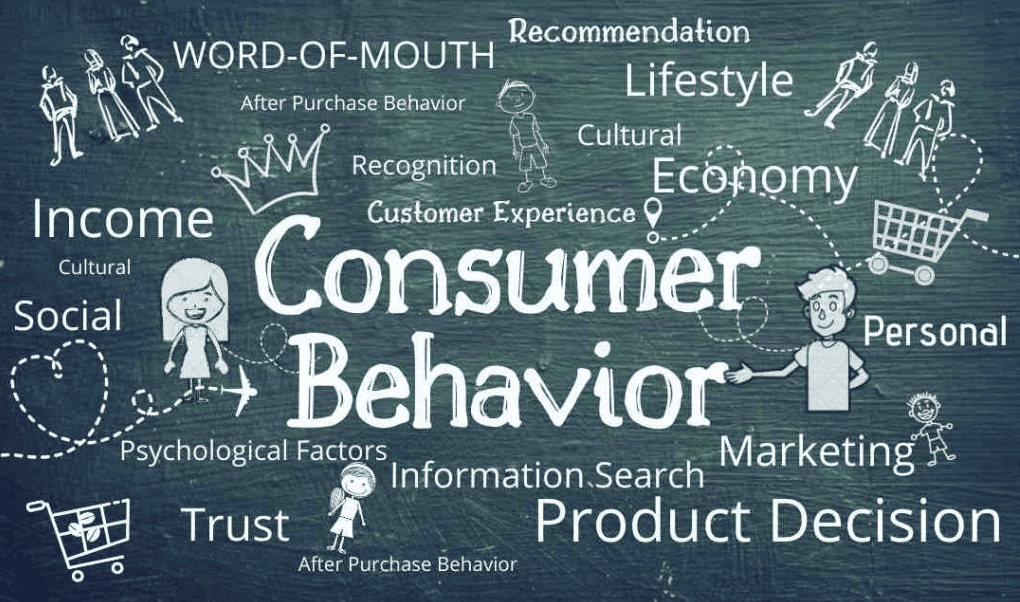Table of Contents
The rise of Quick Commerce (QC) is swiftly revolutionizing convenience in the digital age. QC platforms prioritize rapid delivery, providing consumers with instant access to goods and services. This speed is by advanced logistics networks and real-time inventory management systems, ensuring swift fulfillment of orders. Seamlessly integrating into daily life, QC blurs the lines between online and offline shopping, offering on-demand access through mobile apps and digital platforms. Personalization plays a key role, with QC leveraging data analytics to tailor recommendations and promotions to individual preferences.
As a result, consumers experience unparalleled convenience, satisfying their needs and desires with minimal effort. This convenience culture has reshaped consumer behavior, fostering a preference for instant gratification across industries. Businesses are seizing the opportunities presented by QC, investing in innovation and sustainability to meet evolving customer expectations. With QC poised for continued growth and technological advancements, the future of convenience in the digital age looks promising, driven by speed, efficiency, and personalized experiences.
Instant Gratification: A Catalyst in Modern Consumer Behavior

Instant gratification has become a defining characteristic of modern consumer behavior, reshaping the way people interact with products and services. Enabled by advancements in technology, consumers now expect immediate satisfaction when making purchases, driving the rise of on-demand services and Quick-Commerce (QC). This shift in consumer behavior is evident across industries, from retail and entertainment to food delivery and transportation.
The desire for instant gratification is fueled by several factors, including convenience, time constraints, and the proliferatifacilitated on of mobile devices. With just a few taps on a smartphone, consumers can access a vast array of goods and services, satisfying their needs and desires in real-time. This convenience-driven culture has led to changes in shopping habits, with consumers favoring platforms and businesses that offer fast and efficient service.
However, this emphasis on instant gratification also poses challenges for businesses, who must adapt to meet the demands of the modern consumer. From optimizing logistics and supply chain management to enhancing the speed and efficiency of delivery, companies must prioritize convenience to remain competitive in today’s market. By understanding and catering to the desire for instant gratification, businesses can capitalize on this consumer behavior trend and drive growth in the digital age.
On-Demand Access: Empowering Consumers with Instant Delivery
In today’s digital age, the concept of on-demand access has revolutionized consumer behavior, fueled by the promise of instant delivery. With the rise of Quick-Commerce (QC) and on-demand services, consumers now have unprecedented access to goods and services at their fingertips, anytime and anywhere.
On-demand access is characterized by its ability to fulfill consumer needs and desires swiftly, often within minutes of placing an order. Whether it’s groceries, meals, or household essentials, the convenience of instant delivery has become a driving force in shaping modern consumer behavior. By leveraging advanced logistics networks and real-time inventory management systems, businesses can seamlessly fulfill orders and meet the expectations of today’s fast-paced consumers.
This emphasis on on-demand access has transformed the way people shop and interact with brands, blurring the lines between online and offline shopping experiences. With mobile apps and digital platforms, consumers can browse, purchase, and receive products with unparalleled ease and convenience. As a result, businesses are under pressure to optimize their operations and prioritize speed to remain competitive in the age of on-demand access.
On-demand access empowered by instant delivery is redefining convenience in the digital era, offering consumers unprecedented speed and flexibility in fulfilling their needs. By embracing this trend and investing in technology-driven solutions, businesses can capitalize on the demand for instant gratification and provide exceptional experiences to their customers.
Hyper-Personalization: Elevating the Qcommerce Experience
In the realm of Quick-Commerce (Qcommerce), hyper-personalization has emerged as a powerful tool for enhancing customer engagement and satisfaction. By leveraging advanced data analytics and machine learning algorithms, Qcommerce platforms can tailor the shopping experience to the unique preferences and behaviors of each individual consumer.

Hyper-personalization goes beyond traditional segmentation techniques, offering customized recommendations and promotions based on a variety of factors, including past purchases, browsing history, and demographic information. This level of personalization not only enhances the relevance of product offerings but also fosters a deeper connection between consumers and brands.
In the age of Q-commerce, where speed and convenience are paramount, hyper-personalization plays a crucial role in driving customer loyalty and retention. By anticipating and fulfilling the needs of customers in real-time, Qcommerce platforms can create seamless and enjoyable shopping experiences that keep customers coming back for more.
Furthermore, hyper-personalization allows Q-commerce businesses to differentiate themselves in a crowded market and stay ahead of the competition. By delivering targeted and relevant content to consumers, businesses can increase conversion rates, maximize revenue, and build long-term relationships with their customer base.
Hyper-personalization is a game-changer in the world of Q-commerce, offering unparalleled opportunities for businesses to delight and engage their customers on an individual level. By harnessing the power of data and technology, Qcommerce platforms can create dynamic and personalized shopping experiences that elevate convenience and satisfaction to new heights.
Seamless Integration: Bridging the Gap with Quick Commerce
Quick-Commerce (QC) is a revolutionary approach to retail that prioritizes rapid delivery and convenience for consumers. At its core, QC aims to streamline the shopping experience by offering on-demand access to a wide range of products and services.
Seamless integration lies at the heart of QC, bridging the gap between online and offline shopping channels. Through mobile apps and digital platforms, consumers can browse and purchase items with ease, while also enjoying the convenience of instant delivery. This integration extends beyond the digital realm, with QC platforms leveraging advanced logistics networks to ensure swift fulfillment of orders.
What sets QC apart is its ability to seamlessly integrate into the daily lives of consumers, offering unparalleled flexibility and convenience. Whether it’s ordering groceries for dinner, grabbing a coffee on the go, or replenishing household essentials, QC platforms provide a seamless shopping experience that caters to the needs of modern consumers.
Moreover, QC platforms also integrate with existing retail infrastructure, allowing businesses to optimize their operations and reach new customers in innovative ways. By embracing seamless integration, QC is revolutionizing the retail landscape, offering consumers unprecedented access to goods and services with just a few taps on their smartphone.
Embracing the Convenience Culture: Quick Commerce Leading the Way

In today’s fast-paced world, convenience has become more than just a luxury—it’s a way of life. Quick Commerce (QC) is at the forefront of this convenience culture, revolutionizing the way consumers shop and interact with businesses.
QC platforms prioritize speed and efficiency, offering rapid delivery times and seamless shopping experiences. This emphasis on convenience aligns perfectly with the needs and preferences of modern consumers, who value time and convenience above all else. Whether it’s ordering groceries for dinner, grabbing a last-minute gift, or satisfying a craving with a meal delivery, QC platforms cater to the on-demand needs of today’s consumers.
The convenience culture fostered by QC extends beyond just the act of shopping—it permeates various aspects of daily life. From transportation and entertainment to communication and healthcare, consumers expect quick and efficient solutions to their needs and desires. This shift in consumer behavior has prompted businesses to adapt and innovate, leveraging technology and data-driven insights to meet the evolving demands of their customers.
As QC continues to gain momentum, it’s clear that the convenience culture it embodies is here to stay. By embracing this culture and prioritizing convenience in all aspects of their operations, businesses can stay ahead of the curve and deliver exceptional experiences that keep customers coming back for more.
Embracing the Omnichannel Experience: A Catalyst in Shaping Consumer Behavior
In the realm of retail, the omnichannel experience has emerged as a powerful driver in shaping consumer behavior. Quick Commerce (QC) platforms epitomize this approach by seamlessly integrating online and offline channels to offer a cohesive shopping experience.
The omnichannel experience transcends traditional boundaries, allowing consumers to interact with brands across multiple touchpoints, including websites, mobile apps, social media, and physical stores. This interconnectedness provides consumers with unparalleled flexibility and convenience, enabling them to browse, purchase, and receive products in a way that best suits their preferences and lifestyle.
Moreover, the omnichannel approach caters to the evolving needs and expectations of modern consumers. With the ability to seamlessly switch between online and offline channels, consumers enjoy greater convenience and accessibility, driving engagement and loyalty.
From a business perspective, embracing the omnichannel experience requires a holistic approach to customer engagement and service delivery. By leveraging technology and data analytics, businesses can gain valuable insights into consumer behavior and preferences, enabling them to tailor their offerings and experiences accordingly.
The omnichannel experience is a catalyst in shaping consumer behavior, offering a seamless and personalized shopping journey that meets the demands of today’s dynamic marketplace. By embracing this approach, businesses can not only stay relevant but also drive growth and success in an increasingly competitive landscape.
Evolving Consumer Behavior: The Impact of Instant Delivery

The landscape of consumer behavior is undergoing a profound transformation, spurred by the emergence of instant delivery services. In recent years, the demand for instant gratification has reshaped the way consumers interact with products and services, driving a fundamental shift in their expectations and preferences.
Instant delivery services, exemplified by Quick Commerce (QC), have become a driving force behind this change. Consumers now expect rapid access to goods and services, with the convenience of instant delivery becoming a key factor in their purchasing decisions. This shift is evident across various industries, from retail and food delivery to transportation and entertainment.
Furthermore, the rise of instant delivery has led to changes in consumer shopping habits and patterns. With the ability to receive products within minutes, consumers are increasingly opting for on-demand solutions that offer speed and convenience. This has prompted businesses to adapt and innovate, investing in technology and infrastructure to meet the growing demand for instant gratification.
As instant delivery continues to gain momentum, it is poised to have a lasting impact on consumer behavior. By understanding and embracing this shift, businesses can position themselves for success in an increasingly fast-paced and competitive marketplace, where speed and convenience are paramount.
Business Innovation in the Era of Qcommerce
In today’s rapidly evolving business landscape, innovation is the key to staying ahead of the curve. With the emergence of Qcommerce, businesses are presented with unprecedented opportunities to innovate and thrive in the digital age. Qcommerce, or Quick Commerce, is revolutionizing the way goods are bought and sold, prioritizing speed and convenience above all else. Businesses that embrace Qcommerce and innovate their operations accordingly can unlock new avenues for growth and success.
Adapting to Changing Consumer Behavior:Qcommerce has fundamentally shifted consumer behavior, with an increasing demand for instant gratification and seamless shopping experiences. Businesses must innovate their processes to meet these evolving consumer expectations, offering swift and reliable delivery services and personalized shopping experiences.
Investing in Technology and Infrastructure:To succeed in the era of Q-commerce, businesses must invest in technology and infrastructure that enable rapid order fulfillment and delivery. This includes implementing advanced logistics systems, leveraging data analytics for predictive insights, and exploring emerging technologies such as drone delivery and autonomous vehicles.
Exploring New Revenue Streams: Q-commerce opens up new revenue streams for businesses, allowing them to reach customers in previously untapped markets and capitalize on the growing demand for convenience. By diversifying their offerings and expanding their reach through Q-commerce platforms, businesses can drive innovation and growth in the digital age.
Implementing Sustainable Practices in Quick Commerce
Quick commerce, commonly known as Q-commerce, revolutionizes the retail landscape by offering swift delivery of goods and services to consumers. Despite its convenience, Q-commerce operations often come with environmental repercussions. To mitigate these concerns, integrating sustainable practices is imperative.
Efficient route planning stands as a cornerstone in minimizing carbon emissions associated with delivery. Utilizing sophisticated algorithms for route optimization can curtail fuel consumption and decrease the ecological footprint of delivery vehicles. Embracing green packaging solutions presents another avenue for sustainability. Choosing biodegradable or recyclable materials reduces waste and lessens the environmental impact of packaging.
Transitioning delivery fleets to electric vehicles powered by renewable energy sources is pivotal. This move not only slashes greenhouse gas emissions but also alleviates air pollution. Furthermore, prioritizing local sourcing fosters sustainability by reducing the carbon footprint associated with transportation and supporting regional economies. Complementary measures, such as waste reduction initiatives, further enhance the ecological sustainability of Q-commerce operations.
By adopting these sustainable practices, businesses can uphold the convenience of Q-commerce while actively contributing to environmental conservation efforts, paving the way for a greener future.
Projecting Future Growth: Understanding Consumer Behavior
Anticipating future growth in any industry necessitates a deep understanding of consumer-behavior. Consumer-behavior, influenced by a myriad of factors including technological advancements, cultural shifts, and economic conditions, serves as a compass guiding businesses towards sustainable growth strategies.
In the digital age, consumer-behavior is increasingly shaped by technological innovations. The proliferation of smartphones and internet connectivity has led to a rise in online shopping, with consumers seeking convenience and accessibility. Understanding these digital trends is essential for businesses looking to capitalize on e-commerce opportunities and adapt their strategies accordingly.
Moreover, cultural shifts towards sustainability and ethical consumption are impacting consumer choices. Today’s consumers are more environmentally conscious, favoring brands that prioritize sustainability and ethical practices. As such, businesses that align with these values are poised for growth in the future.
Economic conditions also play a crucial role in shaping consumer-behavior. Factors such as income levels, employment stability, and inflation rates influence purchasing power and spending habits. By staying attuned to economic indicators, businesses can forecast consumer behavior and adjust their strategies to meet evolving market demands.
In essence, future growth hinges on businesses’ ability to decipher and respond to shifts in consumer-behavior, leveraging insights to innovate and remain competitive in dynamic markets.
conclusion
In conclusion, understanding and adapting to evolving what is consumer behavior are imperative for projecting future growth across industries. As technological advancements continue to reshape the digital landscape, businesses must embrace digital trends to meet consumers’ demands for convenience and accessibility. Moreover, the growing emphasis on sustainability and ethical consumption underscores the importance of aligning business practices with shifting societal values. By prioritizing sustainability and ethical considerations, businesses can not only attract environmentally-conscious consumers but also future-proof their operations against changing market expectations.
Furthermore, economic conditions play a pivotal role in shaping consumer-behavior, highlighting the need for businesses to remain agile and responsive to fluctuations in the economic landscape. By staying attuned to economic indicators and consumer sentiment, businesses can anticipate market shifts and tailor their strategies accordingly.
In essence, future growth hinges on businesses’ ability to adapt, innovate, and align with evolving consumer preferences. By leveraging insights into consumer behavior, businesses can unlock new opportunities, foster sustainable growth, and remain competitive in dynamic markets. Ultimately, a deep understanding of consumer-behavior serves as a guiding compass, enabling businesses to navigate uncertainties and chart a course towards long-term success.



Leave a Reply